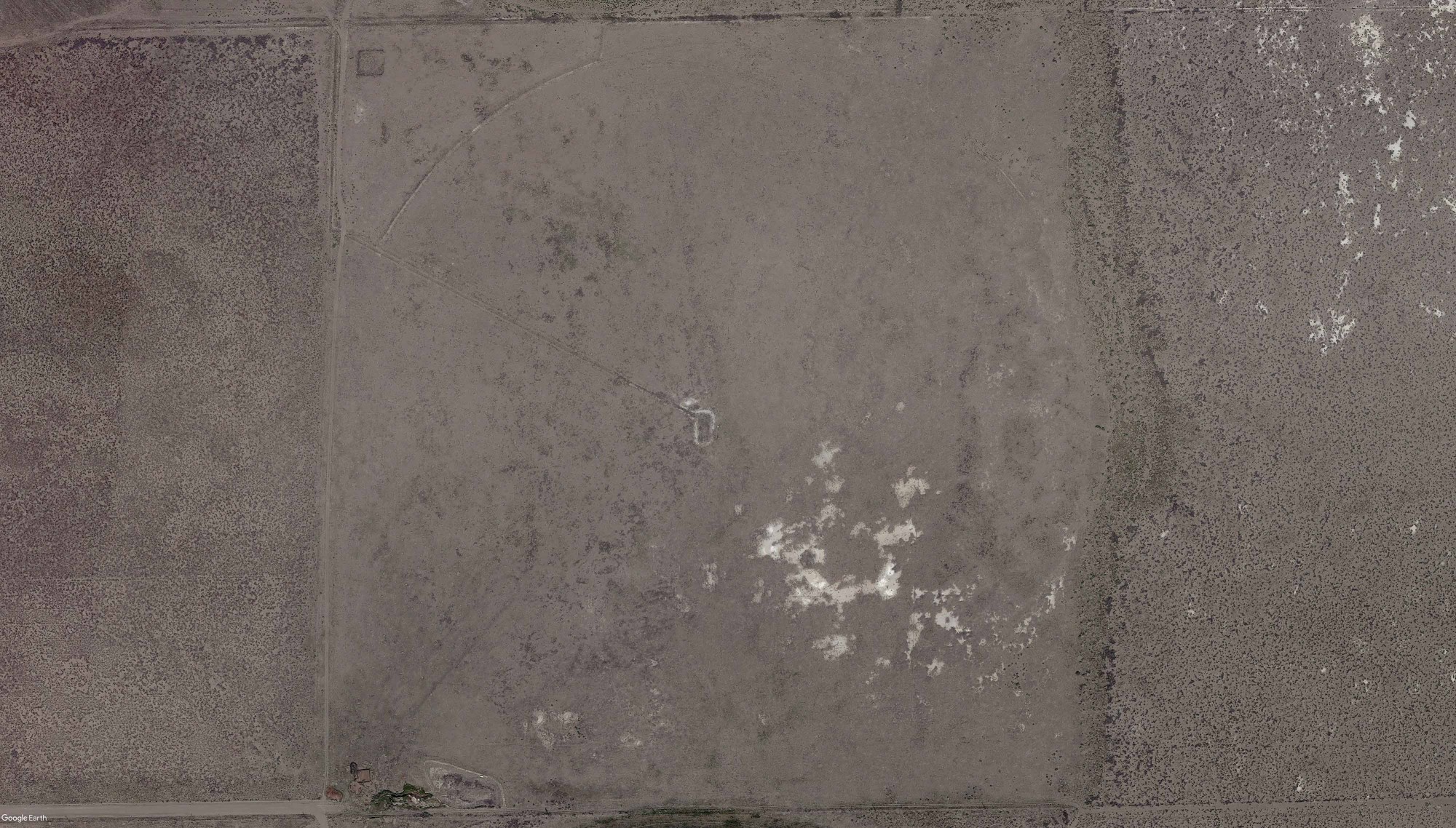
Satellite image exported from Google Earth Pro of the site of Marguerite Humeau’s Orisons, San Luis Valley, Colorado. Courtesy the artist and Black Cube.
Orisons is located in Hooper, Colorado on a 160-acre plot of fallow agricultural land owned by Jones Farms Organics, fourth generation local farmers.
The San Luis Valley
The San Luis Valley is the largest alpine valley in the world and the highest-altitude desert in North America. The valley is approximately 8,000 square miles (21,000 square kilometers) which is the size of the country of Israel, or almost twice the size of the state of Connecticut. Characterized as a high desert, the valley has an average altitude of 7,664 feet (2,335 meters) and an average annual rainfall below ten inches. The San Luis Valley is facing the global effects of climate change, including severe drought and water shortages.

Aerial view of San Luis Valley, Colorado.
Geology
The valley’s borders were formed by the rifting of the Southern Rocky Mountains, with the Sangre de Cristo Mountains forming the eastern boundary and the San Juan Mountains forming the western boundary. According to geologist Dr. Jeremy W. Aber, the geologic origin of the valley “involves a complicated series of tectonic developments beginning with uplift and deformation of the Sangre de Cristo Mountains during the Eocene Epoch (~50 million years ago). Next the San Juan Mountains were built by massive intrusions and large volcanic eruptions during the Oligocene Epoch (~30 million years ago).”
The Great Sand Dunes
The Great Sand Dunes are a National Park and Preserve and also the most conspicuous and well-known landform in the San Luis Valley. The spectacular dunes, nestled below the Sangre de Cristo Mountains, rise as much as 750 feet (230 meters) above the surrounding landscape and are known as the tallest dunes in North America (and rank among the ten tallest dune areas in the world).
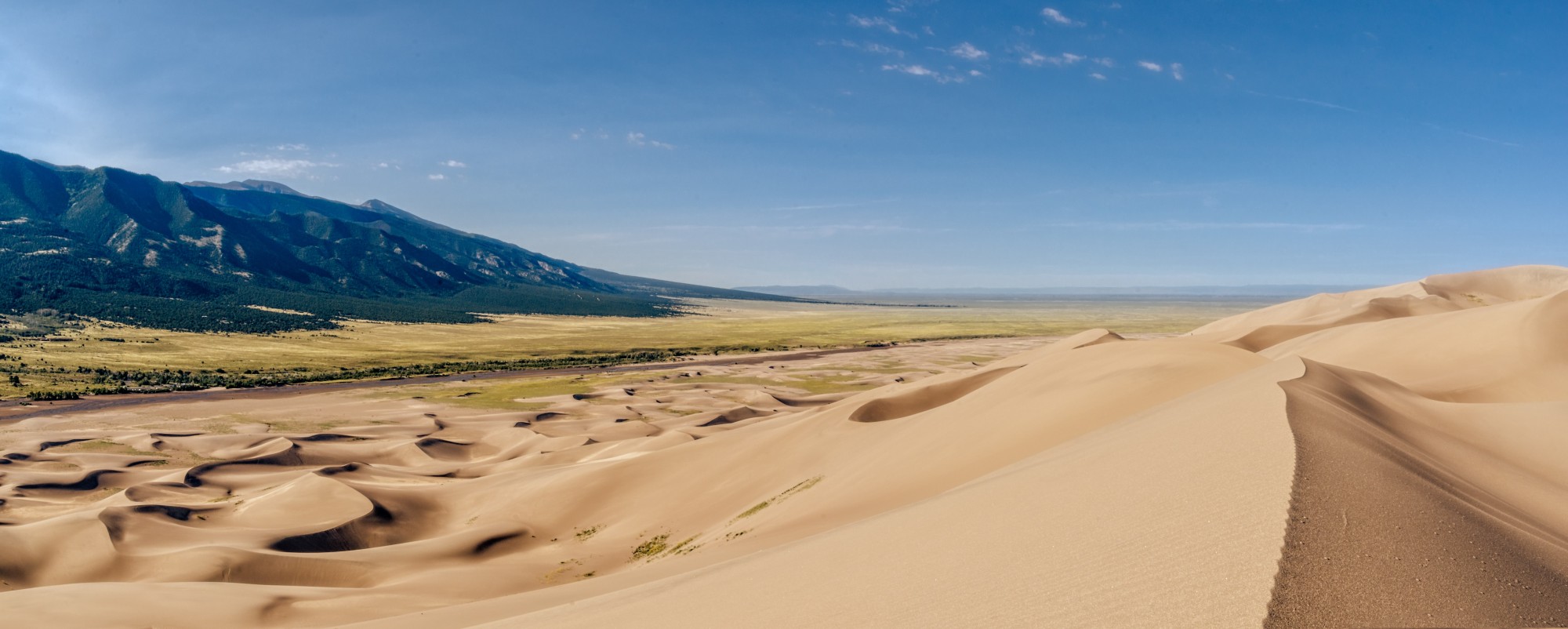
View toward Colorado's San Luis Valley from Great Sand Dunes National Park.
Flora
A number of the sculptures in Orisons were inspired by native and nomadic vegetation that is able to survive on very little water and no maintenance. These plants are seen by the artist as heroes in the landscape for their resiliency and ability to hold down the topsoil. Download a Field Guide to Forest Plants of South-Central Colorado by the United States Department of Agriculture Forest Service, Rocky Mountain Region. Visitors can also search a database of Colorado plants via the Colorado Native Plant Society’s website here (note, you must first have the name of the plant).
Sandhill Cranes
Sandhill Cranes are an iconic species of the San Luis Valley, and an important symbol in Orisons. These large, majestic birds have migrated through the San Luis Valley twice annually since before humans’ existence. Cranes are among the oldest living birds on the planet with the earliest Sandhill Crane fossil estimated to be 2.5 million years old. The cranes are attached to the wetlands in the valley, which have been changing dramatically, and have adapted to source food in grain-filled agricultural fields. The Monte Vista Wildlife Refuge has installed wetlands for the cranes and other valley wildlife. During the spring migration and annual Monte Vista Crane Festival, the refuge will typically host over 20,000 Sandhill Cranes.
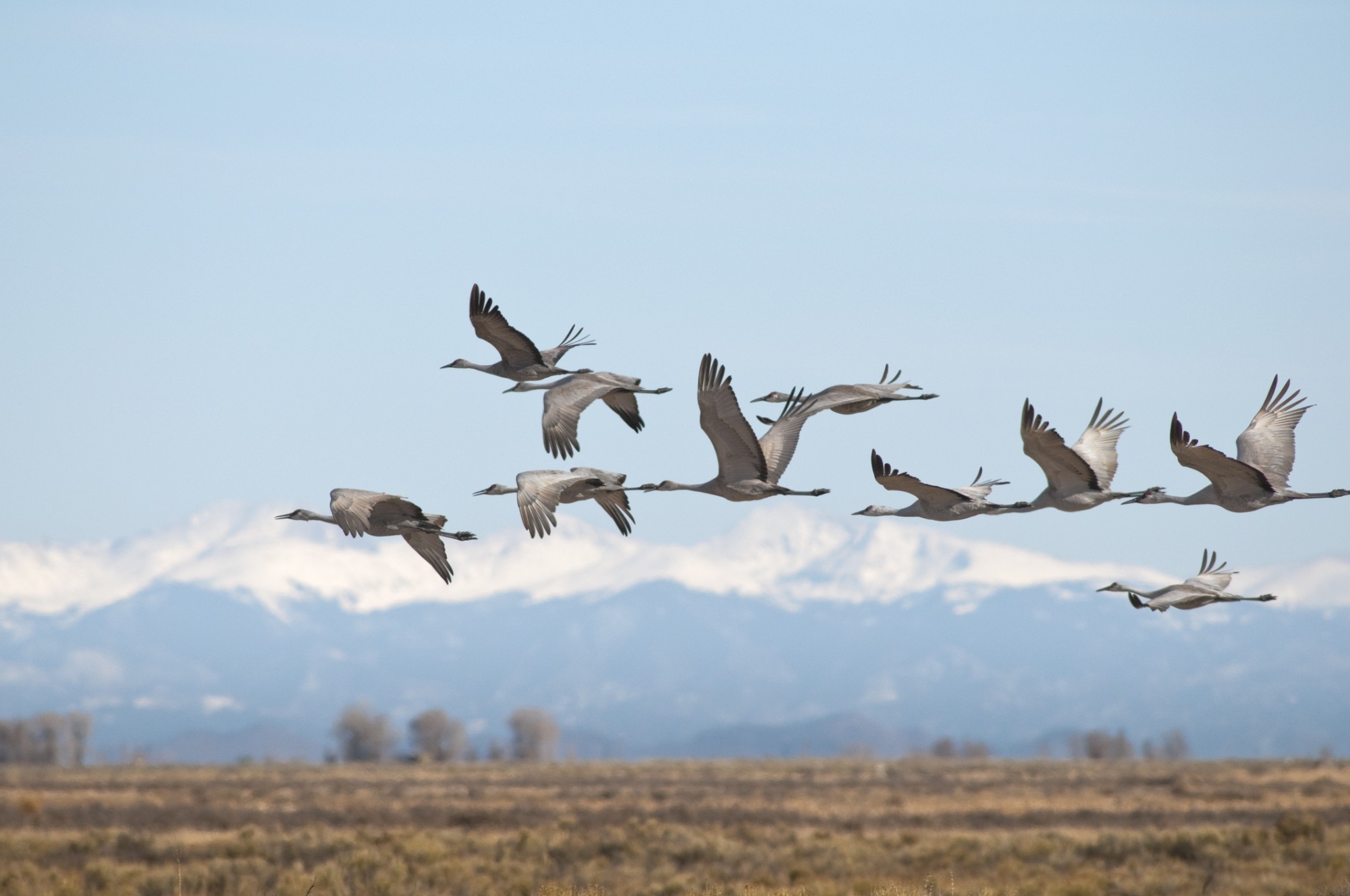
Sandhill Cranes flying through Colorado’s San Luis Valley during migration.
Water
Orisons is an earthwork that embraces the reality of the increasing desertification of the San Luis Valley. Through using no water and paying homage to the plant life that can survive in these conditions, the earthwork engages the complex and changing conditions of water in the region. According to the local paper, the Alamosa Citizen, “declining aquifers, deteriorating wetlands, and an overall warming of the San Luis Valley… are hallmarks of the changing climate we’re experiencing and a phenomenon that has biologists Cary Aloia and Jenny Nehring, and water manager and state Senator Cleave Simpson beyond concerned.”
Colorado is a headwaters state supplying water to over five million Coloradans, 18 other states and Mexico, and does so through reliance on precipitation, mainly in the form of snow. The San Luis Valley has the first water rights in Colorado. The first surface water right in Colorado, appropriated in 1852, is the People's Ditch near San Luis. Water drives the critical agricultural economy, and in recent decades, water has been a hot topic in the valley and beyond, in part due to regional developers and urban city centers looking to export water from the valley.
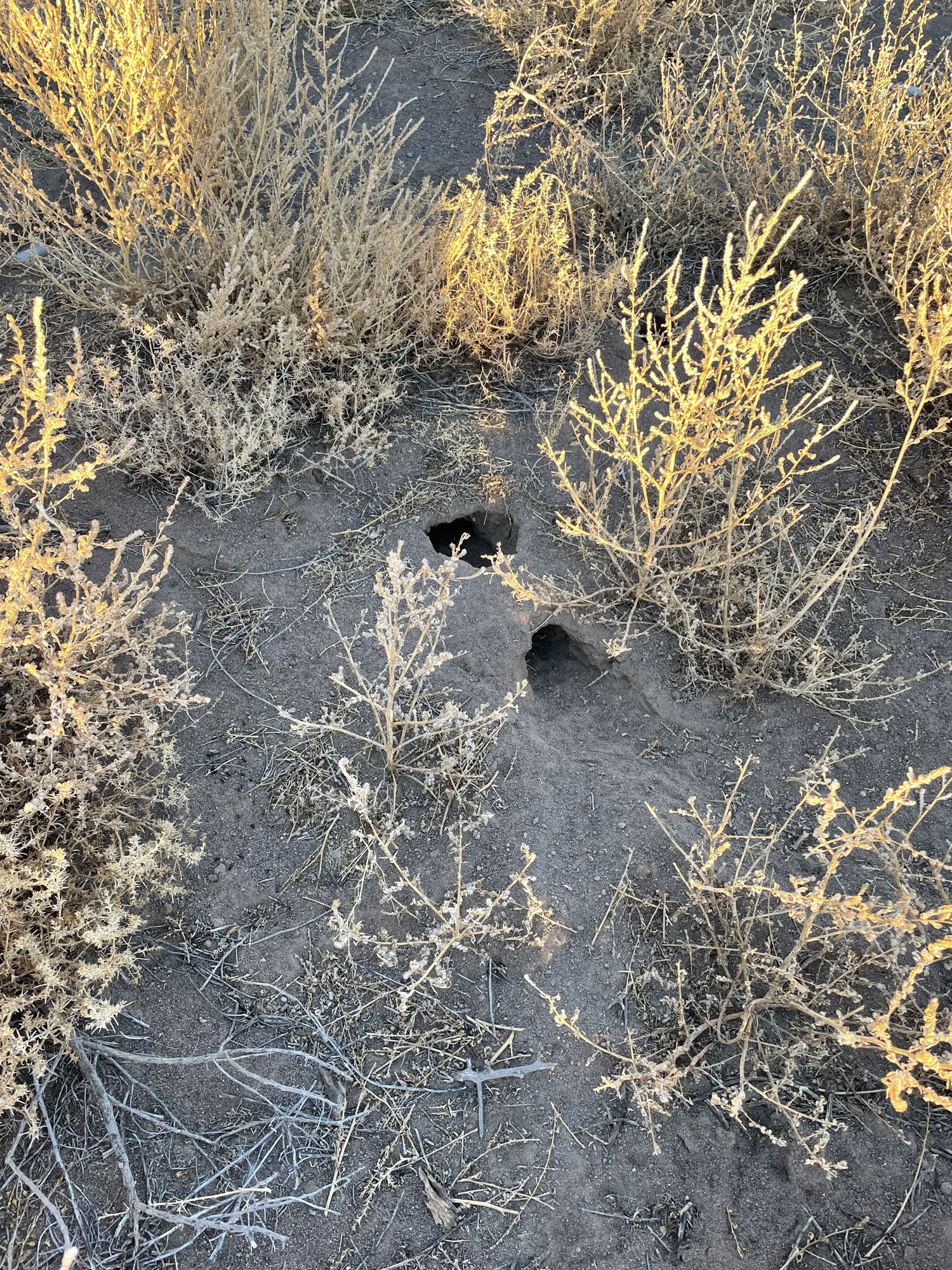
Holes in the Orisons ground, 2022. Photo: Marguerite Humeau. Courtesy the artist.
Human History
We respectfully acknowledge that Orisons is located in the ancestral traditional land of the Ute People, Navajo (Diné) people, and many other Indigenous communities, who stewarded this land for generations.
The archaeological record of American Indians in the San Luis Valley (the Valley) is a record of hunting and gathering. All of the Native peoples who called the Valley home—from the earliest big-game hunters to the Utes who lived there in the nineteenth century—were hunter-gatherers. The Great Sand Dunes website has helpful, expanded information on the history of peoples in the San Luis Valley, for more information visit here.
The region also hosts the oldest non-Native community in Colorado. San Luis, the oldest town in Colorado, was established on April 5, 1851, with a present population of approximately 750. Once a part of four Spanish land grants decreed by the King of Spain, the town's adobe architecture and classic Spanish town layout retain the texture of the historical and cultural influences which shaped the early communities of Southern Colorado. Surrounded by farming and agriculture, the San Luis Valley is a community with a deep history of agriculture as well as a place for spiritual communities. The Northern valley town of Crestone has been considered by some the “most spiritual place in America” due to the town hosting more than two dozen retreat centers and sacred landmarks. Sacred sites can also be found in other areas in the valley such as Shrine of the Stations of the Cross, a series of bronze statues positioned along a path that winds up a mesa to an adobe chapel in the town of San Luis. More closely located to Orisons there is also the local roadside attraction the UFO Watchtower, allegedly this location has hosted numerous UFO sightings over the years.
Jones Farms Organics
Orisons is on land cared for by fourth generation farming family, Jones Farms Organics, who specialize in growing organic potatoes. They are passionate about nutrient dense soil and potatoes, and pride themselves on the sustainability of their farming practices. The Jones’ robust crop rotation incorporates regeneration practices like cover cropping and strategic animal integration to build soil health and improve biodiversity. They grow specialty potatoes and heirloom wheat with an emphasis on soil health, less water usage, creating markets, and working directly with their buyers to build a healthier market and community. Learn more about their farm, history, and values on their website. Occasionally farm tours are offered, please contact Jones Farms Organics using the contact form on their website.
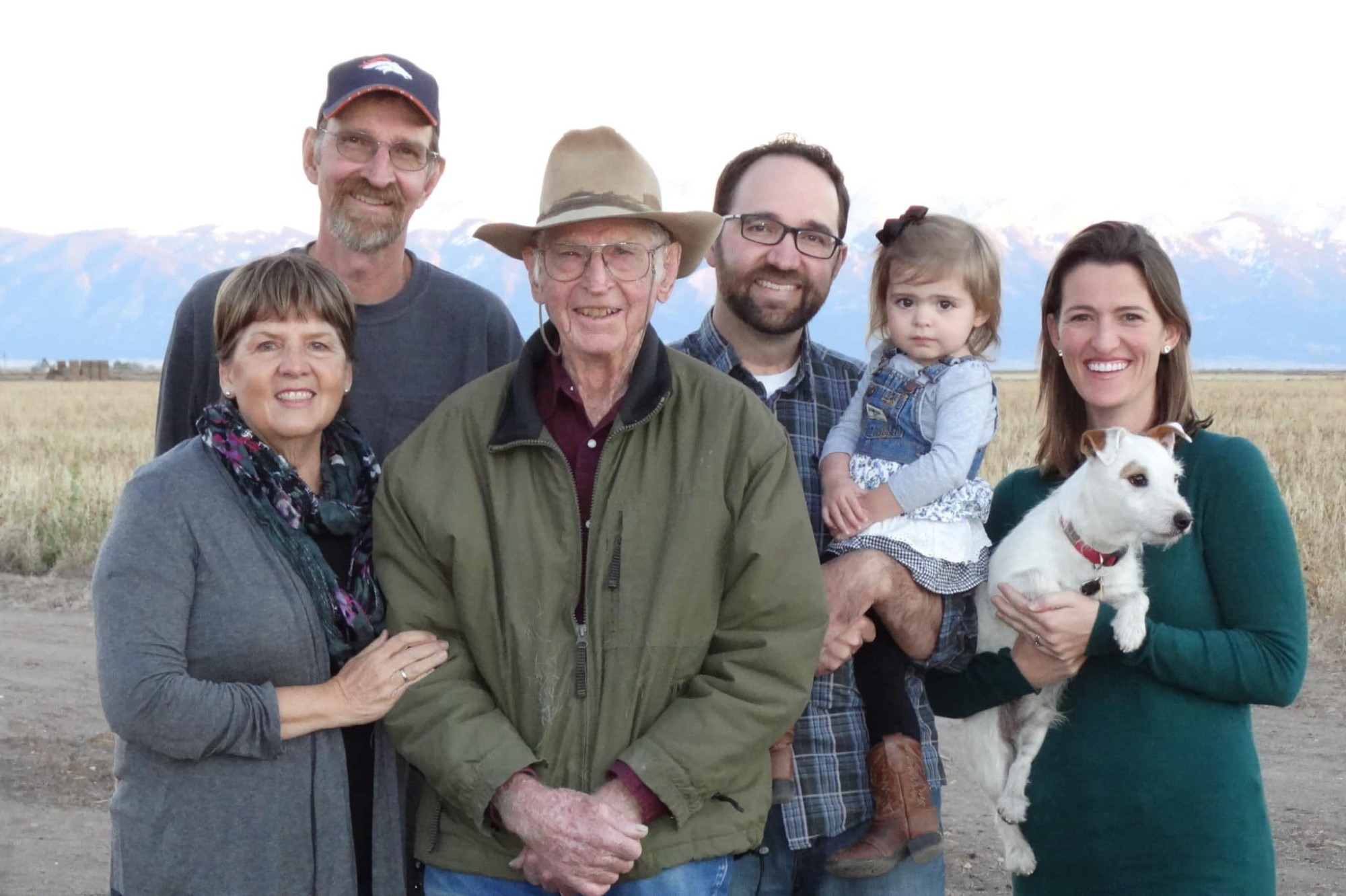
The Jones Family. Courtesy of Jones Farms Organics.

